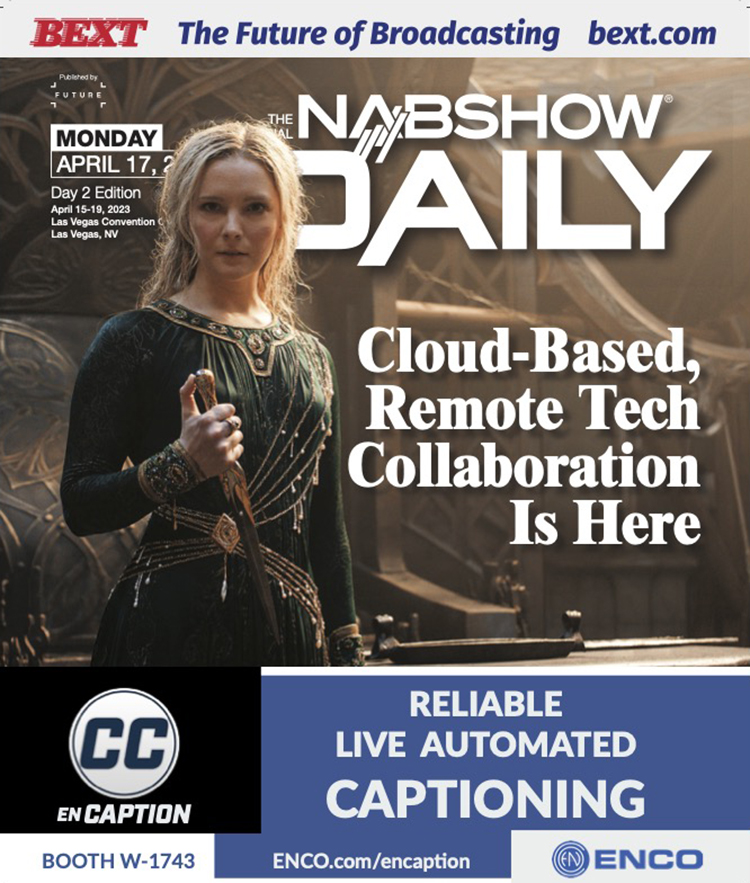We haven’t seen wholesale adoption yet, but models are shifting
BY Paul McLane, RADIO WORLD
Radio is becoming more familiar with “the cloud,” though its ultimate role remains unsettled.
“Many broadcasters have deployed cloud-based services in back-office functions for some time — Google, Microsoft, AWS, etc.,” said Shane Toven, senior broadcast engineer for Educational Media Foundation. “It has not often made its way directly into on-air operations. [But] the on-air model is shifting, particularly as more manufacturers move from hardware to software-based solutions.”
Derek Murphey, network production software manager at Northwestern Media, said the cloud commonly is used for file storage, transfer and production backup. “The delivery side still makes broadcasters nervous, depending 100 percent on a network connection to stay on the air. I hope broadcasters will continue to explore cloud programming and find ways to build redundancy into network infrastructures.”
Stéphane Bert, pre-sales manager at Digigram, said, “We strongly believe that all-public cloud environments for live broadcasts will be possible.” He said “a vast majority” of broadcasters intend to adopt cloud in coming years, for automation, content management, mixing, encoding and delivery of programs to transmitting sites, CDNs and multiplexers.
Private or Public
Marty Sacks, executive vice president of sales, marketing and strategy at Telos Alliance, said, “If we talk about wholesale adoption — when we walk into a facility and everything is virtualized, there’s no hardware in the rack — we’re not there yet.” But he said clients are asking about it more and understand it’s a serious consideration for their future.
Sacks noted that the cloud is not the only way to virtualize. “Sure, you can go fully to the cloud and not have any instances on your premises, but it could be a hybrid of cloud and on-premises, which is a likely choice for many.”
Philippe Generali, president/CEO of software company RCS, said, “Discussions with customers has shifted from ‘What is the cloud?’ to ‘Should I be on a private or public cloud?’”
At RCS, the most common use is automation backup, though hundreds of online stations have embraced it as their main platform. “They’ve rethought the assumption that to sound like radio with its crossfades, segues and compression, they have to have hardware,” said Generali.
Wheatstone Corp. views the cloud as an extension of AoIP networks. “We’re using the same interfaces and similar networking architecture for our Layers software suite for mixing, streaming and FM processing in the cloud,” said Manager of Technology Dominic Giambo.
“If a cloud server in New York goes down, we can automatically load balance everything over to an Amazon server in Los Angeles. … Amazon has the data centers waiting to run whatever you need. We are able to direct a stream from anywhere as a cloud instance that can be brought up or torn down in a second. And you don’t have to pay for it until you use it.”
Virtual Machines
Bill Jackson, principal studio engineer at Educational Media Foundation, said EMF has used VMware to virtualize certain studio and delivery functions. “We have virtual machines in two virtual clusters on opposite sides of the country. The goal is to be able to operate multiple networks out of either virtual cluster with as little consumer interruption and talent disruption as possible. To do so for maintenance or disaster recovery has been paramount.”
A technology executive at another group, who asked not to be named, said his organization wants eventually to feed broadcast content to all its markets from a handful of locations.
“The most important issue for us is trustworthy, reasonably priced internet bandwidth. Transmission works well when we utilize private lines — MPLS — but that can get expensive for some of our smaller markets. Big fat public internet pipes are so much more cost-effective. … Increasing our public internet usage is one of our goals.”
Flexibility is key, said Bill Bennett, media solutions and account manager of ENCO Systems. “There’s a lot of comfort in remaining on-premises with a real-time disaster backup in the cloud. But a station of any size may have an event and want to spin up a temporary station for streaming. It’s so easy to build out a temporary instance for playout and a CDN streaming source and go live.”
Giambo of Wheatstone said the cloud does raise tradeoffs in latency and buffering. “But we are getting so much better at making those tradeoffs, specifically mitigating packet loss. … For now, even putting mixing engines in a server in your rack room will save you racks of hardware and the associated engineering, electrical and real estate space.”
And Sacks of Telos encouraged broadcasters not to shy away. “The cloud is just one way of accomplishing your goals of having flexibility, robust disaster recovery and the ability to scale your operation as your business changes.”
4 Key Takeaways
1. The cloud has a well-established role in radio with back-office applications.
2. On-air disaster recovery and continuity of service is a common use case now.
3. Online-only stations and broadcasters who want to spin up temporary streaming stations are natural cloud candidates.
4. Expect more airchain functions like processing, mixing and EAS to find their way to the cloud more widely.


